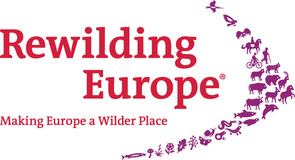
The jury's comment 2012
By Theo Bosboom
On a sunny Sunday at the end of April, the jury met in Steinfurt to select the winners of the Fritz Pölking Prize, now in its fifth year.
The jury's work was extremely harmonious, and there was hardly any disagreement about which entry went through to the next round and which did not. The final winners in both categories were also chosen unanimously. This year, the entry requirements had been changed so that a portfolio or project had to include at least 8 images (previously 10) and a maximum of 12 (previously 20). But despite this restriction, the jury had to note that many participants obviously found it difficult to follow the rules "Less is more" and "Kill your favourites". A whole series of actually successful entries had no chance of advancing because additional, unfortunately very weak material had been added to the minimum required 8 pictures. The reduction to the best pictures is and will probably remain a problem for many photographers.
Winning the Fritz Pölking Prize is undoubtedly not easy. It requires outstanding pictures that have to be technically clean. But that alone is not enough. For in addition, the pictures in an entry must deal with an original topic, fit together in terms of content and style and, last but not least, show sufficient diversity. Entries that could not meet just one of these requirements were left without a chance.
One photographer who knows exactly what ingredients are needed for a good story is Ingo Arndt. He already won this competition in 2008, with a great series of pictures on the life cycle of the monarch butterfly. The fact that he has now managed to convince the jury with his work for the second time is a remarkable achievement! We jurors agreed that with his photo project New Life, which deals with the hatching of insects and reptiles, he has chosen an unusual subject, which has been elaborated photographically throughout at the highest level, and which presents us with images that have never been seen before.
Once again, the jury was pleasantly surprised by the entries to the Fritz Pölking Junior Prize. The young photographers often seem to be much more creative, bolder in their imagery and less entrenched in the old rules of photography. It was extremely difficult for us jurors to decide on one of the participants who had reached the final round. In the end, the choice fell unanimously on Zoltán Gergely Nagy, a young photographer from Romania. His story about the starlings in Blackpool was creatively and coherently realised and also includes a number of extremely strong individual images.










